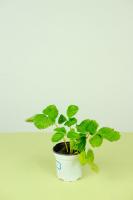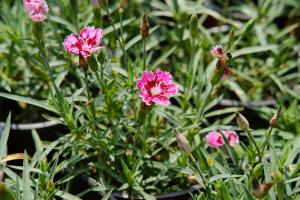Introduction: Understanding Yellowing Tomato Plants
Yellowing tomato plants can be a sign of stress or problems with the plant's health. If left unchecked, it can lead to stunted growth, reduced yield, and even death. In this article, we explore some of the reasons why tomato plants can turn yellow, and what you can do to prevent and treat it.
Reasons for Yellowing Tomato Plants
There are several reasons why tomato plants might turn yellow. First and foremost, it may be due to nutrient deficiencies, especially nitrogen. When plants are lacking in nitrogen, the older leaves turn yellow first as the plant redirects the available nutrients to new growth. Other nutrient deficiencies that can cause yellowing include iron, magnesium, and potassium. Additionally, soil pH that is too low can cause yellowing, as the plant cannot take up nutrients optimally.
Another reason for yellowing can be pests or diseases. For instance, spider mites, whiteflies, and aphids can all cause damage to the leaves, causing them to turn yellow and dry up. Fungal infections such as early blight and septoria leaf spot can also lead to yellowing of the leaves. These infections usually start at the bottom of the plant and move up the stem, causing wilting and eventually death.
Environmental factors can also cause tomato plants to turn yellow. For instance, too much or too little water can cause yellowing, as can excessive heat or cold. Improper planting depth or crowding plants too closely can also stress the plants, causing them to turn yellow.
Prevention and Treatment of Yellowing Tomato Plants
Prevention is the best way to avoid yellowing tomato plants. One way to prevent nutrient deficiencies is to ensure that the soil has sufficient nutrients before planting. Adding compost or organic matter such as manure can help improve the soil's nutrient content. Using fertilizer regularly can also help ensure that the plants are getting the nutrients they need to grow.
To prevent pests and diseases, it's important to practice good garden sanitation. This includes removing dead plant material and debris from the garden, as well as disinfecting tools between uses. Keep an eye on the plants for signs of pests or diseases and deal with them promptly.
To treat yellowing tomato plants, it's important to identify the underlying cause. If it's a nutrient deficiency, applying a balanced fertilizer can help rectify the issue. If pests are the problem, using insecticidal soap or neem oil can help control the infestation. For fungal infections, it's best to remove the affected leaves and apply a copper-based fungicide.
Conclusion: Keeping Tomato Plants Healthy
Keeping tomato plants healthy is key to avoiding yellowing and promoting optimal growth and yield. By ensuring that the plants are getting the right nutrients, practicing good garden sanitation, and addressing any issues as they arise, you can keep your tomato plants healthy and fruitful for the entire season.

 how many times do yo...
how many times do yo... how many planted tre...
how many planted tre... how many pine trees ...
how many pine trees ... how many pecan trees...
how many pecan trees... how many plants comp...
how many plants comp... how many plants can ...
how many plants can ... how many plants and ...
how many plants and ... how many pepper plan...
how many pepper plan...






























